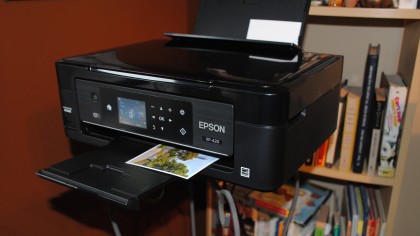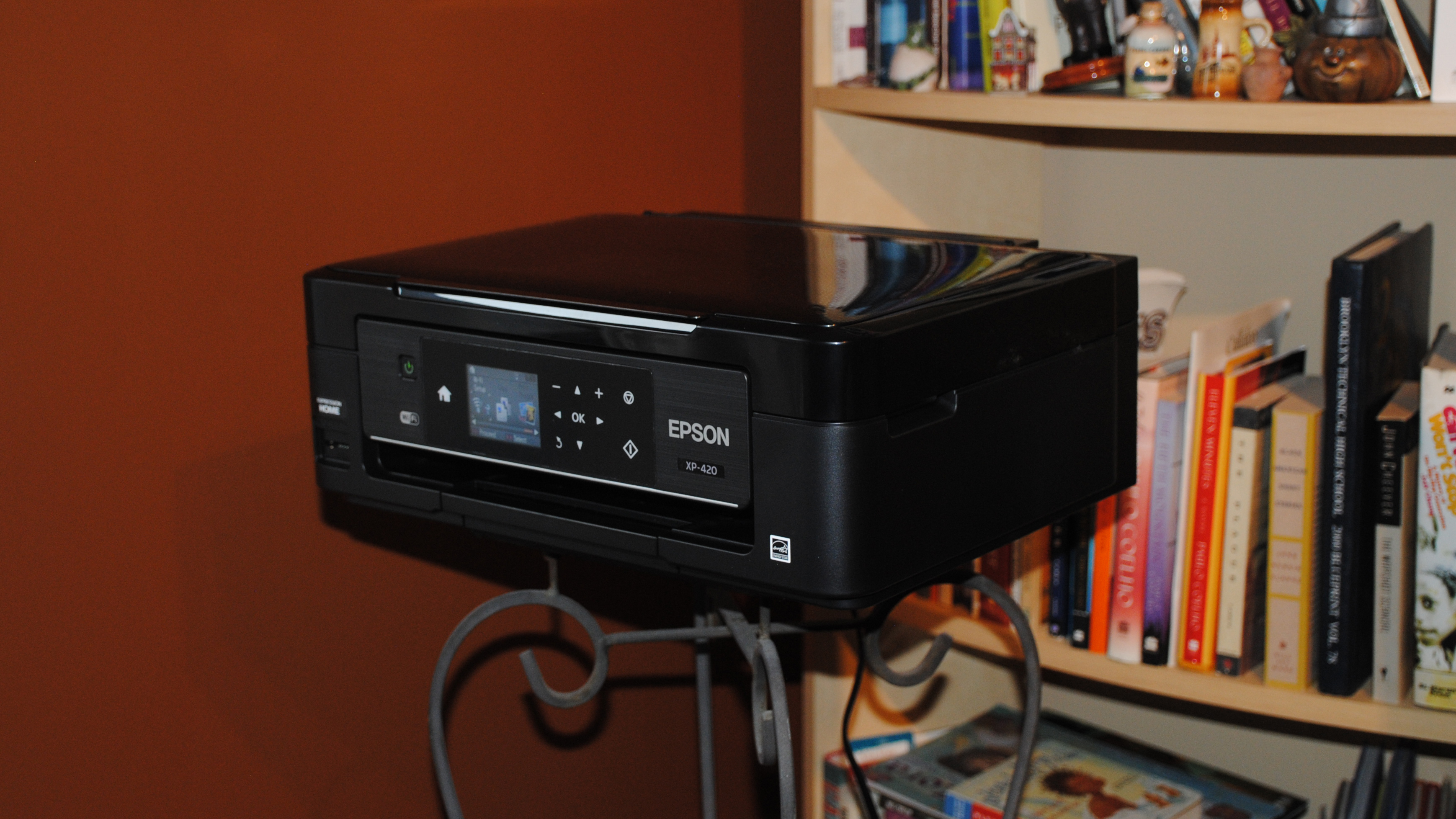Why you can trust TechRadar
The XP-420 is a bare bones printer that has just enough spec pizazz to battle for a place on your desk. It fits four small ink cartridges (Black, Cyan, Magenta, Yellow) that are incredibly easy to install. The cartridges won’t give you the color complexity of the six-tank Pixma MG7520 or the five-cartridge XP-820, but if you’re a photo enthusiast rather than a professional photographer, this likely won’t matter to you.
You can load up to 100 plain letter sheets into the input tray, same as the XP-820, but not as many as the Pixma MG7520, which can handle up to 125 sheets. You can connect to the device via a USB 2.0 cord, which is (annoyingly) not provided, or via 802.11 b/g/n Wi-Fi.

Maximum print quality is where the spec sheet suffers. The Canon Pixma MG7520 prints at a maximum dpi (dots per inch) of 9,600 X 2,400. The XP-820 and XP-420 only produce prints that are 5,760 x 1,440 optimized dpi.
This means your colors won’t be as vibrant, your images will lack detail and complexity, and images will wash out along the edges. They’ll still look great, just not as great as ones produced by the Pixma MG7520 and any other more expensive, photo-focused device. However, compared with the more expensive HP Envy, which only prints images at 4,800 x 1,200 dpi, the XP-420 offers tremendous bang for your buck.
In terms of print value, one Epson 220 standard package that contains three color cartridges on Epson.com will run you about $24, and you’ll need to purchase a $12 black ink cartridge as well, which brings you to $36 before tax, shipping and handling. You can also purchase individual color cartridges for about $8.99 each.
I was able to print 10 8 x 10 color photos, five 5 x 7 color photos and 20 4 x 6 color photos before the machine alerted me that I was running low on ink. By using the navigation, I was able to go into the system and find out which of the four inks was nearly depleted. I learned that 50% of my black ink remained, 40% of my yellow ink remained and about 20% of my blue ink remained. However, magenta had run down to about 5%. That’s not bad productivity for an $8.99 ink cartridge.
Gadget geeks will find plenty of wireless printing and scanning capabilities on this device, including Epson’s proprietary wireless software, Apple AirPrint and Google Cloud Print. I’ll talk more about wireless printing and scanning in a few paragraphs.
Speed
Right out of the box, you’ll enjoy using the XP-420. This may sound like an understatement if you’ve never owned your own printer, but typical installation processes can be time-consuming and frustrating. Not with this device. I was up and running via laptop-based and iPhone-based Wi-Fi in fewer than five minutes, and I printed my first black & white document in just 34 seconds. The Canon Pixma MG7520 is easy to install, but the XP-420 is light years faster.
Unlike other devices, including the Pixma, you won’t need to run a bevvy of test prints before you get started. I was able to print a 5 x 7-inch color photo on Premium Gloss Photo Paper as my second print. The image quality was decent, but it took three minutes and 32 seconds for the small image to complete.
Compared to the Pixma, which produced a better quality print on much larger Letter-sized Glossy Paper in just 85 seconds. On the XP-820, I was able to print a 4 x 6 color snapshot in about 12 seconds on Glossy Photo Paper. So if time is of the essence, you’ll want to pay a bit more for advanced devices.
Black and white images were a bit more manageable. It took 13 seconds to produce one B&W text-based document, which is slightly worse than the Canon, which produced a similar document in nine seconds. I got comparable results running the page-per-minute test. The XP-420 pushed out eight B&W pages in 60 seconds, while the Pixma MG7520 spat out 14 pages. You won’t notice a difference in B&W text quality.
For those of you who have your prints and documents stored at home, the XP-420 offers easy scanning-to-computer functionality. Simply click the method with which you’d like to transfer the document, and press scan. The image will automatically appear on your computer’s desktop, where you will be prompted to save it. The whole process took about thirty seconds.
